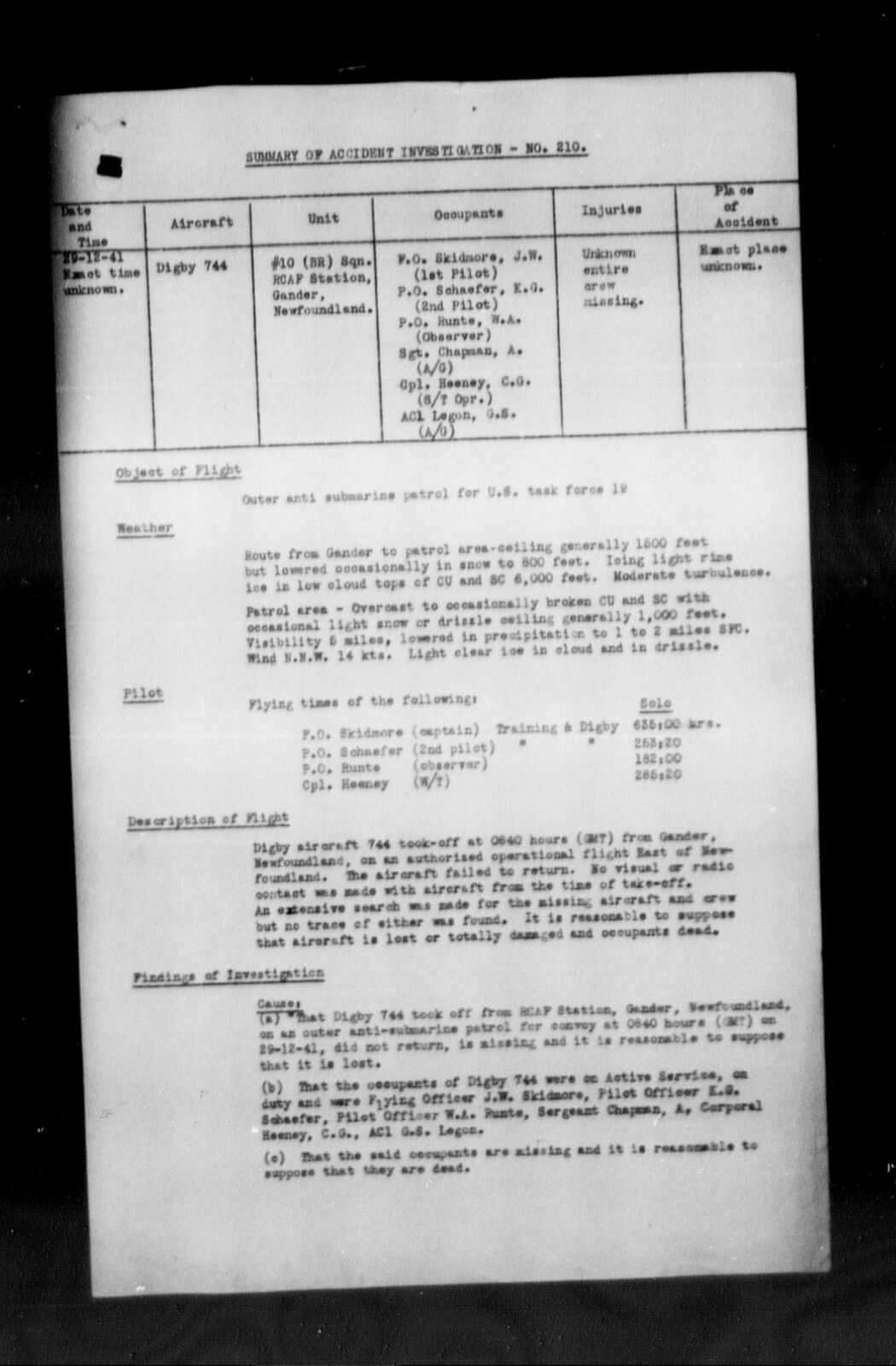
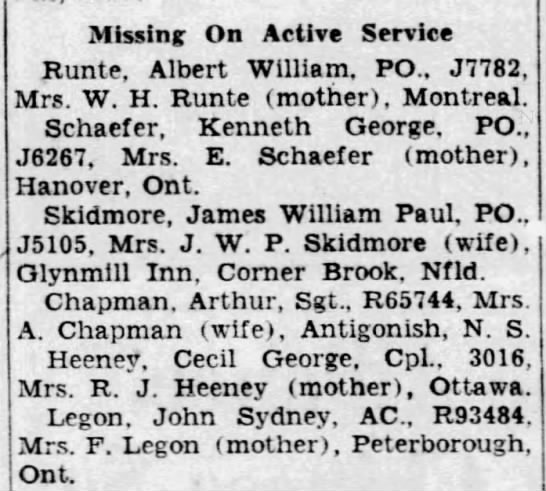
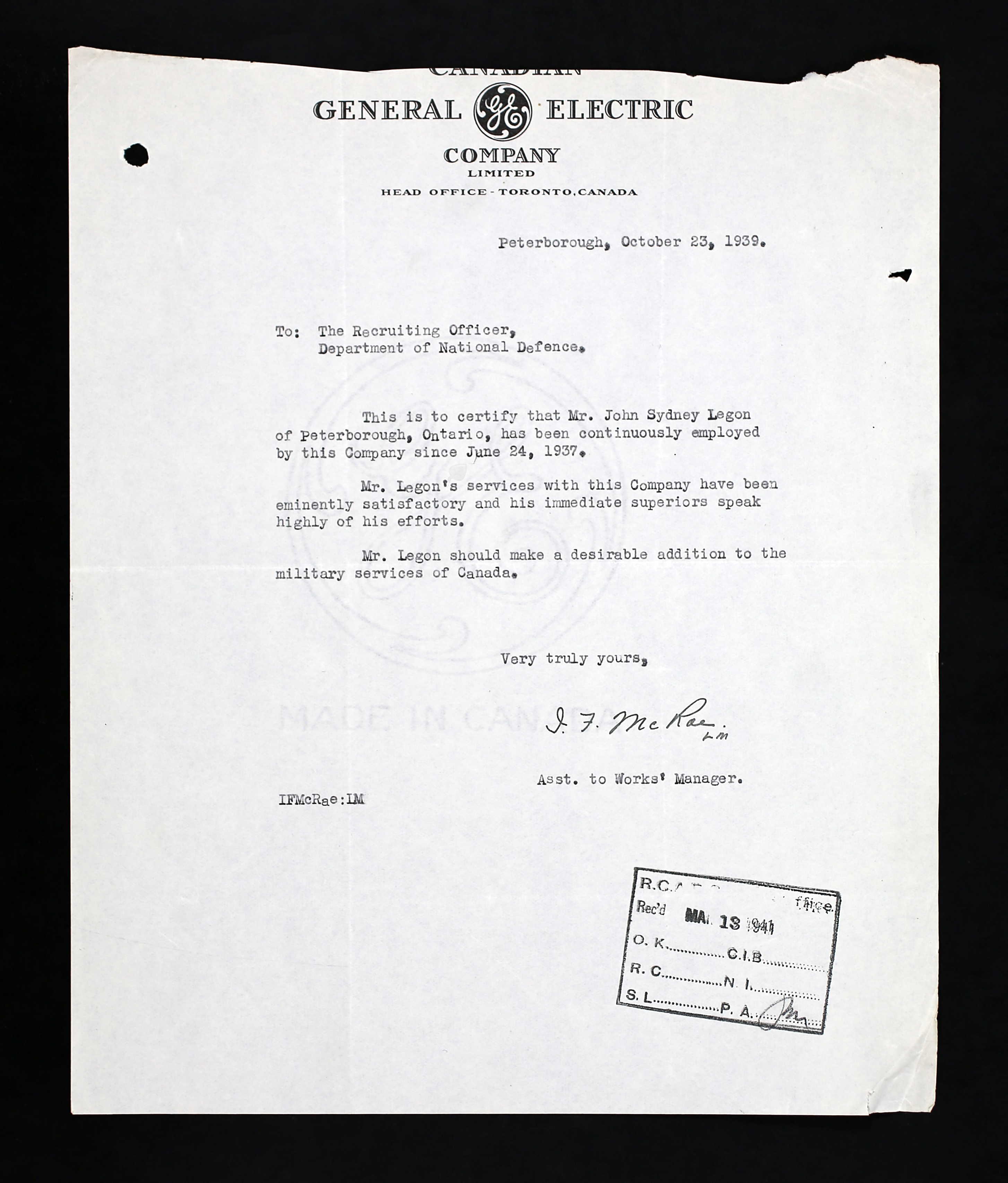
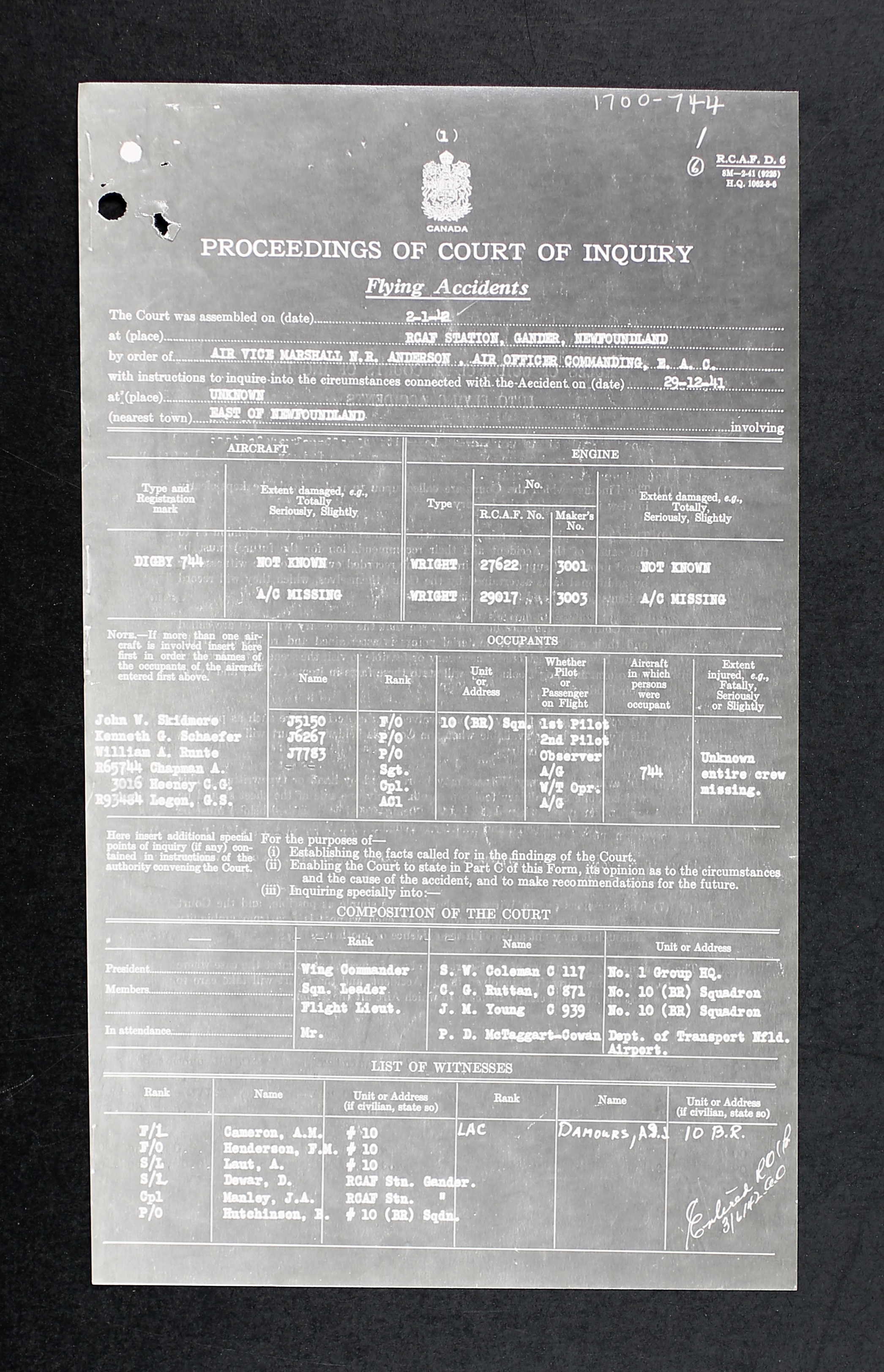
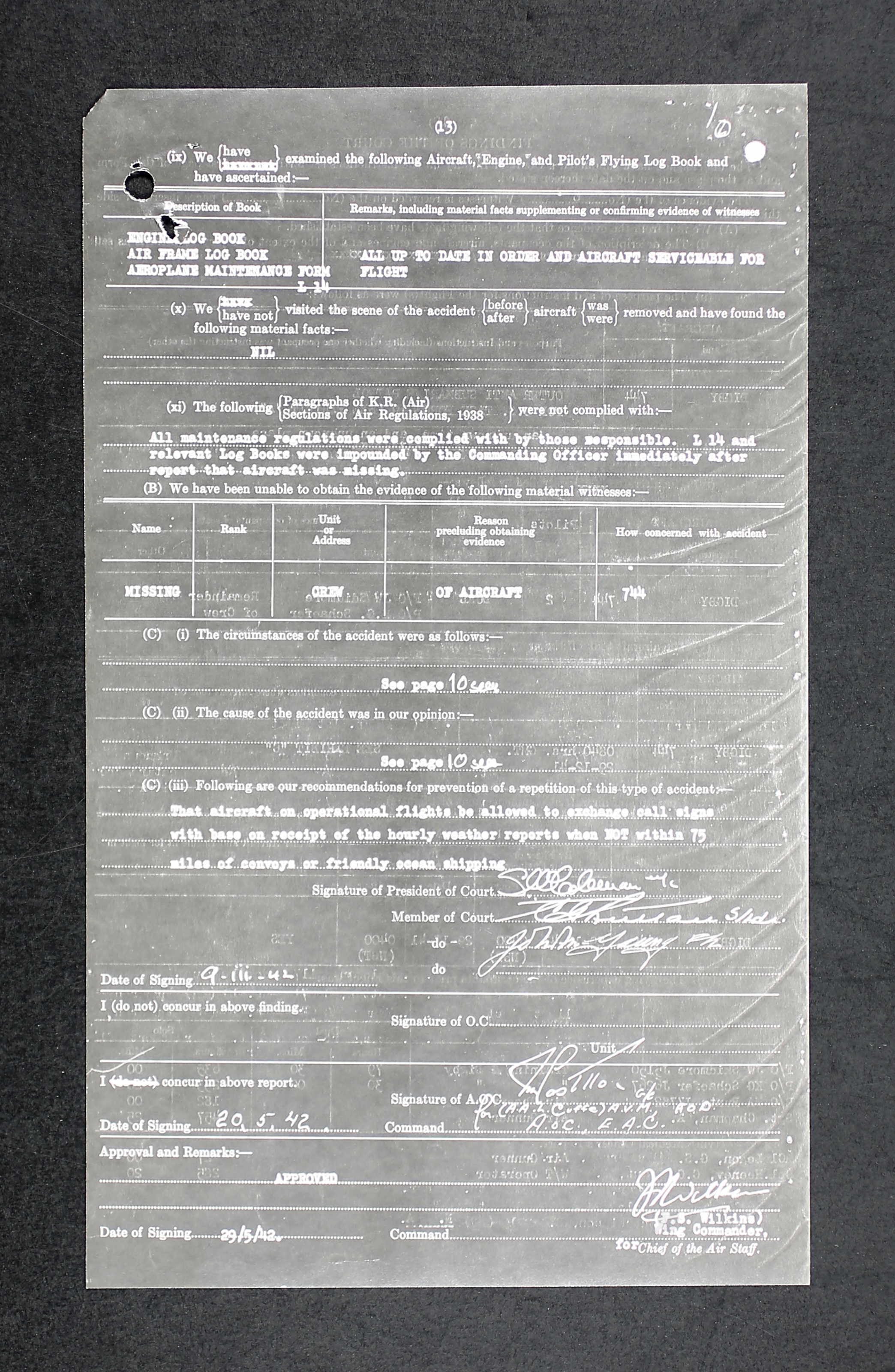
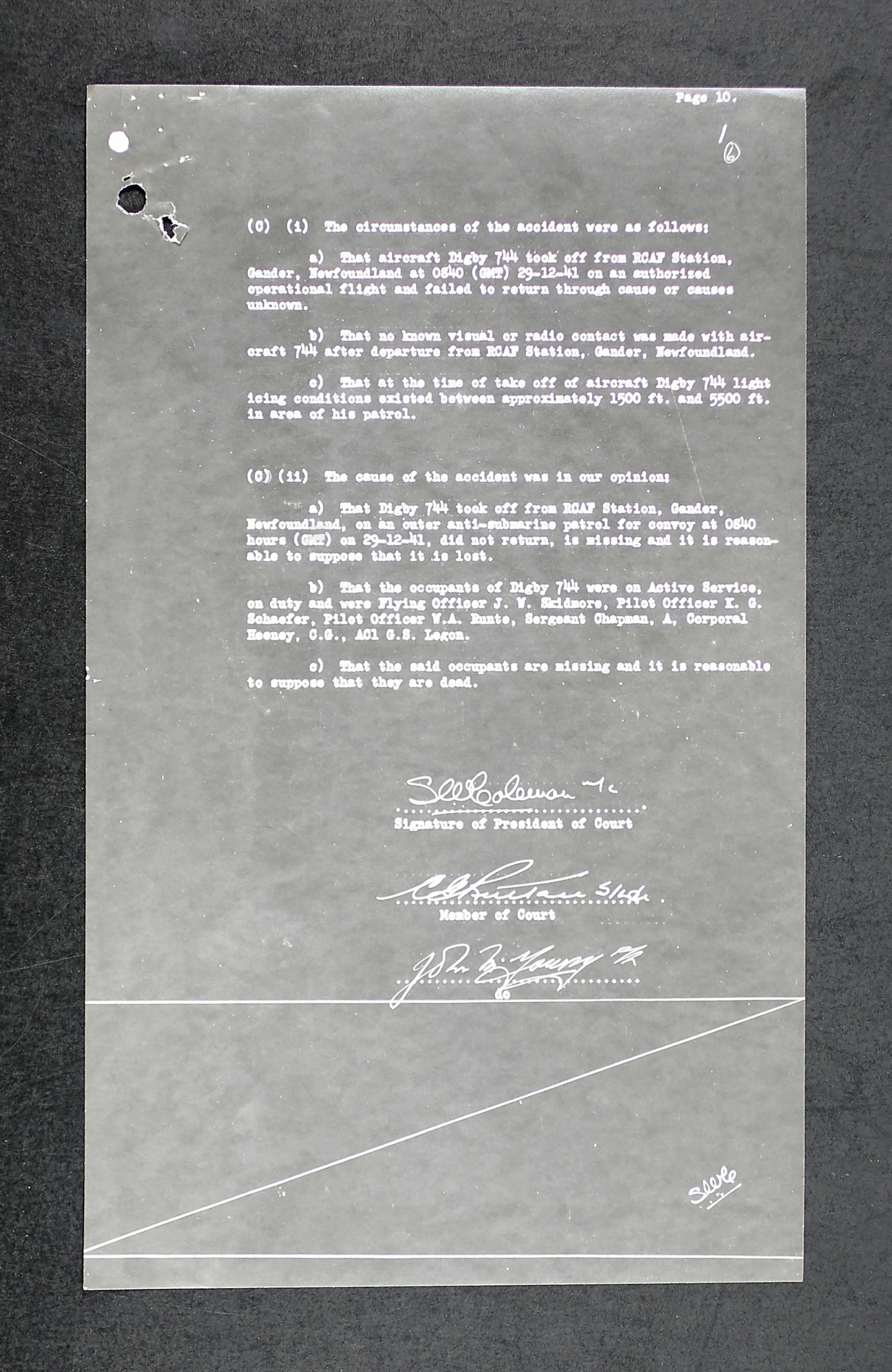
February 6, 1918 - December 29, 1941






John Sydney Legon was the youngest child of Frederick Legon, gardener, and Frances Mary (nee Phillips) Legon of Peterborough, Ontario. He had two brothers, Arthur Phillip Legon and Ernest Frederick Legon. Another brother, Sidney Frederick Legon was killed in action on May 3, 1917. John had two sisters, Mrs. C. Cargill and Frances S. Legon. The family was Anglican.
John had two years junior matriculation and three years at technical school, machine shop, and drafting. He worked as a machinist at Canadian General Electric and then Canada Illinois Tools for a total of four years prior to enlisting with the RCAF as an armourer.
He stood 5’5” tall and weighed 131 pounds. He had blue eyes and red hair, with a fair complexion.
He started his journey through the BCATP on February 27, 1941 at No. 1 Manning Depot, Toronto. From there, he was in Trenton until April 23, 1941, then sent to Mountain View, Ontario until July 1, 1941. “He has completed No. 31 Armourers’ Course finishing 30th in a class of 42, with 61.1%. He has a good practical knowledge of subjects but rather backward in class. Will, however, as he gains experience, make a reliable armourer.” From there, he was sent to No, 10 BR Squadron, Gander, Newfoundland on July 2 1941. (John was at the Trenton station hospital from March 8 - 15, 1941.). John sent his mother $20 a month.
At 0840, December 29, 1941 Digby 744 took off with the crew PILOT F/O J. W. Skidmore, J5105, SECOND PILOT P/O K. G. Schaefer, J6267, OBSERVER P/O Albert William Runte, J7783, AIR GUNNER AC1 John Sydney Legon, R93484, AIR GUNNER Sgt. Arthur Chapman, R65744, and WIRELESS OPERATOR Cpl. Cecil G. Heeney, P3016, with No. 10 BR Squadron, and flew out of Gander. They failed to return through cause or causes unknown. That no known visual or radio contact was made with aircraft 744 after departure from RCAF Station, Gander, Newfoundland. That at the time of take-off of aircraft, light icing conditions existed between approximately 1500 feet and 5500 feet in the area of his patrol. The cause of the accident: That Digby 744 took off on an outer anti-submarine patrol for convoy did not return, is missing and it is reasonable to suppose that it is lost. That the occupants of Digby 744 were on Active Service on duty…that the said occupants are missing and it is reasonable to suppose that they are dead.”
“Digby from Gander unreported and overdue, but fuel should not be exhausted until approximately 2200 tonight. Aircraft on overseas convoy operation and absolutely no wireless contact with aircraft since departure at 0440 29/12 and D/F repeat D/F therefore possible…All available facilities of RCAF, RCN, USN, and USAAC endeavouring to contact and bring in aircraft.”
A Court of Inquiry was struck. [Microfiche T-12340, Image 4644] Seven witnesses were called. DESCRIPTION OF FLIGHT: Digby aircraft 744 took off at 0640 hours from Gander, Newfoundland on an authorized operational flight east of Newfoundland. The aircraft failed to return. No visual or radio contact was made with aircraft from the time of take-off. An extensive search was made for the missing aircraft and crew, but no trace of either was found. It is reasonable to suppose that the aircraft is lost or totally damaged and occupants dead. The third witness, S/L Albin Laut, C861, Officer Commanding of 10 BR Squadron stated that he felt the captain and crew of Digby 744 were fully qualified in all respects. [He was killed on October 3, 1943, while on a cross country flight near Sydney, NS flying Ventura PV-1 2148.] The sixth witness, P/O Bertrand Hutchinson, J5063, pilot at No. 19 BR Squadron stated, “I was detailed as Second Pilot in Digby 745 to do a submarine patrol on US Convoy Task Force 19. We took off just after Digby 744 which was proceeding to the same convoy as ourselves. We did not see Digby 744 at all, but at position 50 degrees 00 N, 50 degrees 30 W, when it was still dark, I saw a flame float on the water about 3 or 4 miles to our starboard side. It stopped burning just after we passed it. Other than this, I saw nothing of Digby 744. We proceeded on our patrol, searching for the convoy until our time was up and then returned to base.” FINDINGS OF INVESTIGATION: CAUSE: (a) That Digby 744 took off from RCAF Station, Gander, Newfoundland on an outer anti-submarine patrol for convoy at 0640 hours, 29-12-41, did not return, is missing and it is reasonable to suppose that it is lost. (b) That the occupants of Digby 744 were on Active Service, on duty…(c) that the said occupants are missing, and it is reasonable to suppose that they are dead. CONCLUSION: Aircraft failed to return for reasons unknown, probably due to icing conditions. All maintenance regulations were complied with by those responsible. L14 and relevant Log Books were impounded by the Commanding Officer immediately after report that aircraft was missing. RECOMMENDATION: That aircraft on operational flights be allowed to exchange call signs with base on receipt of the hourly weather reports when NOT within 75 miles of convoys or friendly ocean shipping.” Aircraft of the unit and of the US Army Air Corps searched for three days with no result. They had later been grounded due to weather.